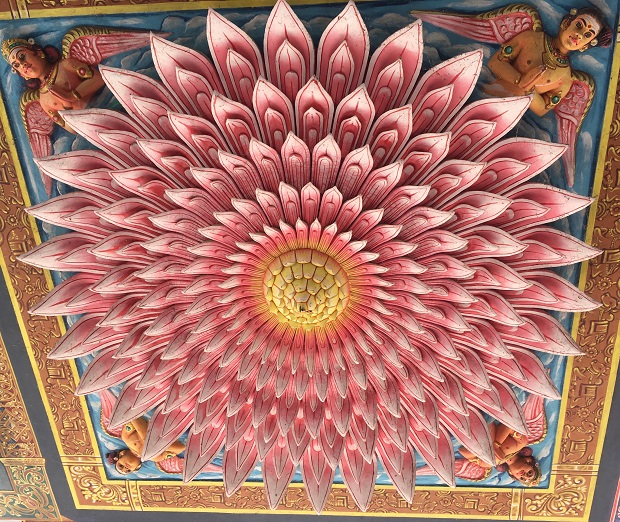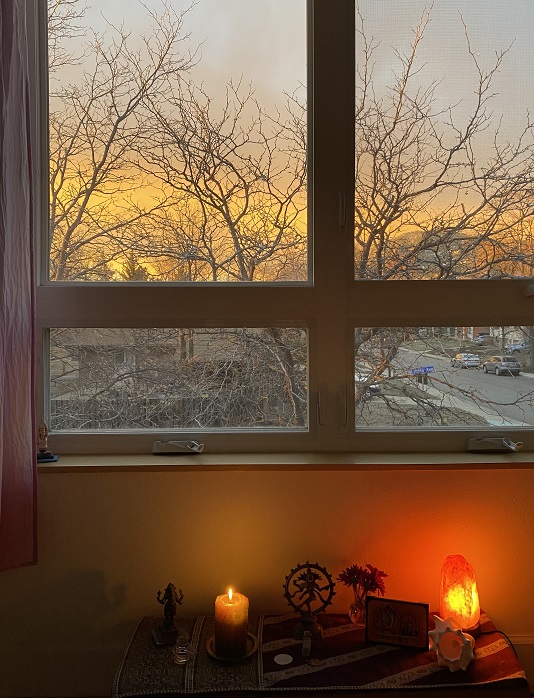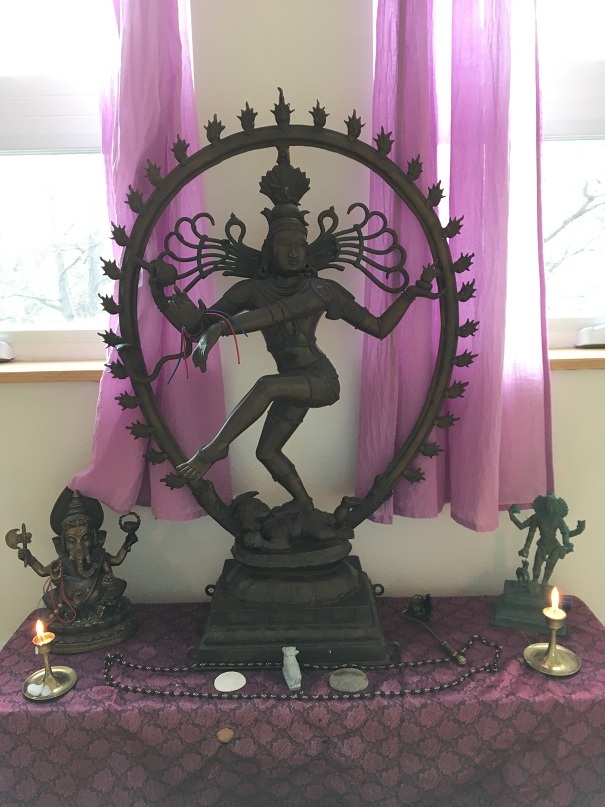(this is an excerpt from my book-in-progress)
Stepping onto the path of yoga generally starts with some type of awakening, whether conscious or unconscious. If you look back at your journey, you may identify turning points that have motivated a quickening of movement on the path. A time of awakening for me involved a romantic breakup and its emotional residue. In the depths of my despair, as I hit bottom, something inside reminded me of yoga, which I had dabbled in as an undergraduate. The breakup was a wake-up call, which led me to examine what I was doing with my life in a variety of ways.
This is so often the case, some devastating event in our life wakes us up, jolts us into our hearts and helps us to remember there is more to being alive than the mundane life we’ve been enacting. So I sought out a teacher, and that teacher led me further down the path, and then to another teacher and so on. It was a gradual process with successive levels of awakening and awareness.
But reflecting deeper on my life as a whole, I see a pattern of seeking something more. I repeatedly experienced a feeling that something was lacking in my life, something spiritual in nature. Initially I turned to Christianity since that was what I’d been exposed to. Then I sought out various substances and experiences as so many of us do, seeking to fill this sense of lacking on the material plane, through experiences or stuff.
And some of us get a taste of it from yoga asana, which was definitely my experience. After certain poses, I would experience a “bliss hit” as energy surged through my body, and I wanted more. And often after practice, I experienced some serenity and equanimity which would persist for some time.
Ultimately, all of these openings or awakenings are due to grace/anugraha. Life provides circumstances to which we can respond in many different ways. It is by grace that we choose to use these openings as an impetus on our path of yoga.
One form of grace you may have heard about is shakti-pat. Like so many concepts, the notion of shakti-pat has many layers of meaning and interpretation. “Shakti” means “power,” and” pat” is “falling,” so shakti-pat is the descent of power, or grace. It is a way that the individual experiences grace in their being.
Most of us have had an experience of spontaneous awakening, a hit of shakti-pat, to some degree, perhaps lying on a beach or in the mountains, sitting on a park bench, holding your newborn baby, experiencing art or intimacy. Somehow we just drop into the reality of the present moment, with a spontaneous realization of the Highest reality. Or it may come through some type of practice.
The experience can feel like a sense of Oneness, a recognition of the connectedness of everything and yourself as the center of it, or engulfing it all. Such experiences can be a flash, or a wave, and can last a moment or days or weeks. Yet for most of us, the experience eventually fades and we return to our mundane awareness.
In many traditions, shakti-pat is defined as something bestowed upon a student from a teacher. You may know of gurus who distribute such blessings via a touch or glance, or in other subtler ways. Some people report feeling an energetic transmission, when others say they’ve felt nothing. The student can receive or experience it in a number of ways. Some report a feeling of receiving a sensation small or large of the shakti, though for some, shakti-pat can occur without consciously registering an initial impression. In these traditions, this is the vehicle of awakening and movement toward greater awareness. From another perspective, reliance on a guru could leave a student relying on these “hits,” creating a dependency rather than self-sufficiency.
One way to think of grace or shakti-pat is that it is always available, it is always being offered, we just need to cultivate our awareness and experience of it, to open to it. We can receive it from many sources, be they friends, teachers, acquaintances or circumstances. I often sense a deeper presence and peace in certain people, including some of my yoga teachers. The absolutely free shakti can move through us in any number of ways.
The variety of experiences regarding the wake-up call, including the receptivity to a guru’s shakti pat, or a sensitivity to someone’s energy, points to a deeper understanding of shakti-pat. There must be some receptivity, readiness, or openness in the student to receive. This is related to the concept of adhikara, in the sense of a student’s receptivity and/or qualifications to receive the teachings.
Shakti-pat is the initial, and subsequent, awakening(s) which propels us on the path of yoga. It involves some descent of grace into the individual, which leads them to seek a teacher, practices, and teachings. It is often said, when the student is ready, the teacher will appear, and that is precisely because of adhikara, the readiness of the student to receive. This has certainly been my experience, as one teacher has lead me to what I needed next. At times I had wished I had met certain teachers sooner, but looking back, I wonder whether I would have been ready and receptive at an earlier time.
The importance of a teacher cannot be overemphasized. Sometimes the awakening experience can be very disorienting. They can happen spontaneously and unexpectedly and can be quite intense and/or confusing without context or understanding. They can also happen at any point on the path as your practice progresses, can take you by surprise, and be perplexing. An experienced teacher can help you move through these awakenings, providing you with the necessary knowledge and support.
The moment of initially waking-up, involving some shakti-pat, leads us to become a seeker. On some level, this impulse of the shakti has guided us toward the highest. I was lucky, as are you, since right now you are seeking deeper teachings of yoga, turning toward yoga for deeper fulfillment. However, the initial experiences of awakening are not enough to sustain us. As one of my teachers says, we need to move from being a seeker to being a finder. And the bridge for most of is some technique, some type of practice. Meditation is an excellent method for finding your deeper self and stabilizing the experiences of awakening into our everyday reality.











